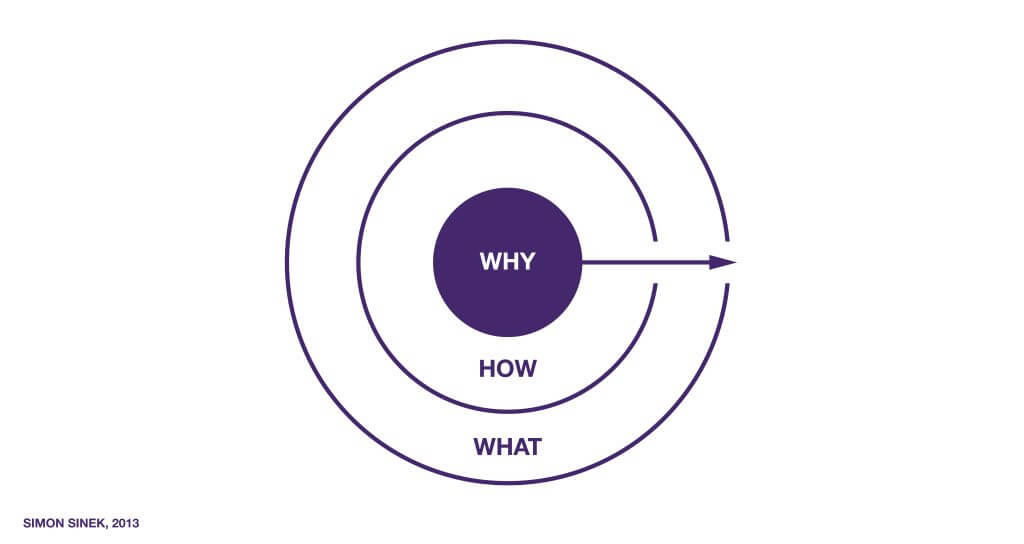A good brand manager knows that the consumer does not buy his product, but rather his purpose, his idea, his values. This is very clear in Simon Sinek’s TED Talk where he demonstrates his Golden Circle methodology.
According to Sinek, big companies, brands and most successful people think, operate and communicate in the same way. And, in one way or another, they all follow the scheme below:

Absolutely every business knows what they are doing (WHAT). Most of them know how they do it (HOW). However, few know why (WHY).
The great majority communicates from the outside into the circle. That is, they begin their communication by talking about what (WHAT) they do and subsequently how (HOW) they do.
Companies and brands that stand out make their communication from the center out of the circle, beginning their speech with WHY.
1st Example. From the outside in:
WHAT – We make great computers.
HOW – These are great-looking, simple-to-use, user-friendly computers.
2nd Example. Inside out:
WHY – For everything we do, we believe in breaking the status quo. We believe in thinking differently.
HOW – The way we break the status quo is by producing products with great design, simple to use and user-friendly.
WHAT – By the way, we make computers.
The answer to inspire people and bring them closer to your business is to have the “why” very well defined. That is, having a purpose, a belief, a thought that guides how the company or brand acts and manifests itself.
It is this sense of purpose that makes people connect with other people. And it would be no different to connect with brands.
“People do not buy what you do. They buy why you do it. “– Simon Sinek
A good brand manager can keep this essence active and noticeable in any and all contact between the brand and some public, whether internal or external.
This consistency at points of contact ensures that more people think the same things about a product or service. In other words, managing a brand is building a same repertoire of meanings in the collective mind.
It is a long-term process, and doing so using a strong purpose as a guiding wire facilitates the construction of such perceptions.
A brand can have hundreds of contact points to help build value. Whether it’s in-store displays, bus ads, elevator medias, websites or stories on instagram. This the amount of communication vehicles tends to increase with the digital revolution that we live today.
However, the only point of contact that will inevitably come from the consumer experience just before or during consumption is packaging.
You may have taken some product off the shelf in the supermarket, or requested through a motoboy quick delivery application, or even have it received from an Amazon drone. At all times you will always interact with the packaging before consumption.
The packaging has this inexhaustible characteristic because it has several functionalities. For example:
Contain, protect, transport, store, identify, distinguish. And guess what, it also serves to associate your brand with your product.
According to Gavin Ambrose and Paul Harris in Packaging the Brand, a good packaging is one that can span the entire markerting mix, a four-pillar set (product, price, promotion and square) that seeks to maximize awareness of the product. Packaging can communicate the product and be synonymous with its category, build a perception of value and price, express attributes and characteristics to promote, and is structured according to the logistics of implementation in the markets and points of sale.
In addition to the end consumer, packaging can impact different audiences of a brand throughout its existence. For example, it impacts the research and development department, marketing, designers, graphics, factories, logistics, salesmen, shopkeepers, distribution, promoters and consumers. Logo is an opportunity to distribute perceptions about a product throughout your production chair.
We can interpret the packaging as physical, that is, only the bottle.
We can interpret the mark only as a set of values and perceptions.
However, whoever consumes the brand ultimately does not do this dissociation. For consumers the brand is the product.


